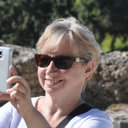Homocysteine, heat shock proteins, genistein and vitamins in ischemic stroke--pathogenic and therapeutic implications.
Nøgleord
Abstrakt
Stroke is one of the most devastating neurological conditions, with an approximate worldwide mortality of 5.5 million annually and loss of 44 million disability-adjusted life-years. The etiology of stroke is often unknown; it has been estimated that the etiology and pathophysiology remains unexplained in more than 40% of stroke cases. The conventional stroke risk factors, including hypertension, diabetes mellitus, smoking, and cardiac diseases, do not fully account for the risk of stroke, and stroke victims, especially young subjects, often do not have any of these factors. It is very likely that inflammation, specific genetic predispositions and traditional risk factors interact with each other and may together increase the risk of stroke. Inflammatory and immune responses play important roles in the course of ischemic stroke. Hyperhomocysteinemia (hcy) is considered a modifiable risk factor for stroke, possibly through an atherogenic and prothrombotic mechanism. Both genetic and environmental factors (e.g., dietary intake of folic acid and B vitamins) affect homocysteine level. Identification of the role of hcy as a modifiable risk factor for stroke and of HSPs as regulators of the immune response may lead to more effective prevention and treatment of stroke through dietary and pharmacological intervention. Dietary modification may also include supplementation with novel preventive compounds, such as the antioxidative isoflavones--genistein or daidzein.



